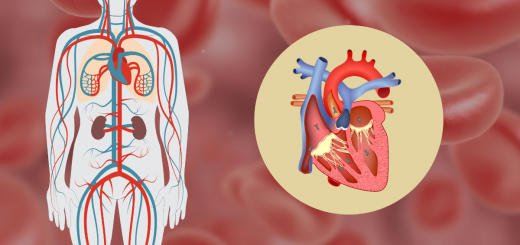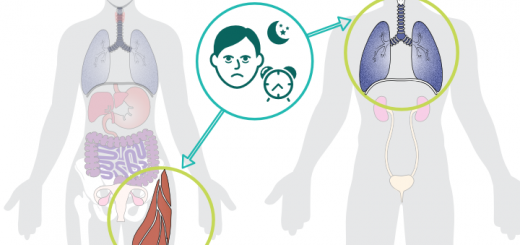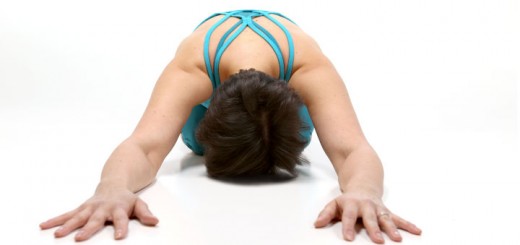How to balance kapha in your yoga practice
4I know someone who his colleagues and friends often describe as “a rock.” Everybody knows that he is reliable, consistent, and solid in every sense. But that solidity comes at a price. It can manifest as lethargy, procrastination, dullness, and depression. He must do some form of exercise every day of his life; otherwise, he “feels like a slug,” begins to oversleep and overeat, and becomes sluggish and listless.
Two main qualities that define kapha are cohesion and density. It is the watery or cohesive force that holds solid things together, much like mixing water with flour enables you to make dough. If you get your proportions wrong while mixing the dough, you can make it too watery or too dense, either of which will prevent your dough from rising and make it harder to use for baking. It works similarly with kapha, which needs to have a proper balance between its water and earth components. Excess of moisture can lead to bloating, edema, excessive tissue growth; too much density can lead to weight gain, lethargy, procrastination, excessive attachment to people and things, and so on. That is why managing kapha energy usually includes some form of:
- Heating the body to counteract the dampness
- Actively moving the body to counteract stagnation
Folks with high levels of kapha might need to avoid “boot camp” style activities that usually crank up the intensity from the start. Doing movement and activities well above the student’s physical capacity are discouraging for kapha types and can strain their cardiovascular system. Instead, focus on building the intensity gradually, over time.

Here are some general guidelines for yoga practice to keep kapha in balance:
- Focus on building exercise consistency: Try to arrange your day in a way that requires you to be active in short intervals throughout.
- Choose whole-body rather than partial body activities: For example, you can start with a stationary bike but transition to activities that move the entire body.
- Challenge yourself: Work up a sweat but be sure not to strain your heart.
- Reframe your mental attitude: Avoid comparing yourself to “skinny yogis”; that type of physical structure is undesirable and unattainable to most kapha types.
- Keep yourself mentally engaged: Choose physical activities that you find fun and enjoyable.
- Find your tribe: Find an exercise buddy who would encourage you and hold you accountable. Choose exercise/yoga classes and activities that help you feel like part of a community.
ASANA SUGGESTIONS
- Begin your practice by matching your current energetic and physical state and then gradually increase the intensity.
- Keep your asana practice active and physically challenging but appropriate to your current physical state so that you walk away with a sense of accomplishment rather than discouragement. Focus on developing the balance between stability and flexibility throughout the body.
- Choose practices that are heating and stimulating, like vinyasa practices. Make sure to move with your breath; do not rush yourself. Do not force yourself into more challenging poses.
- Try core strengthening poses and practices that keep you structurally stable and improve your metabolism and digestive capacity.
- Choose active standing poses with a focus on chest opening and balance development. Do fewer static poses close to the ground (supine, seated).
DESIRED OUTCOME OF ASANA PRACTICE
An ideal kapha balancing practice would make the practitioner feel invigorated, warm, and light, with improved circulation and a sense of spaciousness in the chest and lungs. It would help the mind and senses feel sharp and clear, and emotional heaviness released.
PRANAYAMA RECOMMENDATIONS
- Energy stimulation: Right nostril breathing, focus on inhalation and retention of breath
- Heating and clearing: Humming, kapalbhati, bhastrika (if not too congested)
- Head clearing: Prana/Udana vayu work with a focus on the “third eye” center
- Balancing: Alternate nostril breathing for a balancing effect
MEDITATION SUGGESTIONS
Kapha-focused meditation needs to help release emotional attachments and counteract mental stagnation and lethargy. Group meditation might feel more supportive and encouraging.
- Practice hooking your attention to a focusing device of your choice (breath, physical sensation, hand position, etc.) When you find yourself drifting off into imagination or daydreaming, bring your attention back to your focal point.
- Combine meditation with activity (movement, hand gestures, humming) to stay awake and present.
- Choose imagery that increases fire and air elements: bright warm sun, the wind moving through the trees, the expanse of the clear blue sky, wide-open field with colorful flowers. Use gold, blue, and orange colors.
- Try mantras and mudras that release possessiveness, help let go of attachments, and cultivate feelings of love and compassion toward all creatures.
Below is an example of a kapha-managing yoga practice that, in the beginning, matches your kapha energy and then helps you balance it. In this yoga practice, we aim to energize your entire body, improve circulation, clear up your lungs and sinuses, and help you let go of inertia and stagnation. We will also work on releasing excessive attachments to people and things so that you can walk away from this practice feeling invigorated, warm, and light.
Next time we will discuss dosha’s primary locations in the body and what it means to our health—tune in!
[jetpack_subscription_form]
References
-
Yoga Therapy: A Guide to the Therapeutic Use of Yoga and Ayurveda for Health and Fitness by A.G. Mohan and Indra Mohan (affiliate link)
-
Yoga and Ayurveda: Self-Healing and Self-Realization by David Frawley (affiliate link)
- The Chemistry of Joy: A Three-Step Program for Overcoming Depression Through Western Science and Eastern Wisdom by H. Emmons, M.D. (affiliate link)




















This kapha doesn’t like beginning a morning practice on my back, I’ve just been on it for 8 hours.
I need a peppy cadence to begin, once I got to hands + knees was better, no humming for this kapha in am, I use humming when my Vata/mind chatter is dominant, not when my mind is sluggish. Finally got to standing poses + now this Kapha was waking up, I had to add a few Surya A’s to get warm prior to standing. The rest was nice although I would never do a long meditation after early morning practice when feeling kaphic. I’m going to do the lovely guided meditation when I return from my long walk.
Thank you Olga
Excellent feedback, thank you Ginny! I wonder how this practice would feel to you in the late afternoon—I know my kapha usually acts up around then 🙂
Dear Olga,
Thank you for all your wonderful classes. I am a yoga teacher, yoga therapist ( in the viniyoga tradition and an avid student of Ayurveda and I am often using these methods to help my students. I loved the pitta balancing class you gave last time. It really spoke to my vagabond pitta. During this kapha sequence I loved the variations you gave for the shalabhasana and virabhadrasana series. A good healthy push to move that sluggish energy.
I hope I get to meet you one day but I live in France. Do you take students via Zoom?
Hari Om,
Lisa
Thank you Lisa, this is so lovely to hear, especially from someone who uses Ayurvedic tools regularly! I really appreciate it. I do work with students from all over the world via Zoom; I have some info on what it looks like here. I also do mentorship sessions with yoga teachers and yoga therapists. Let me know if you are interested!